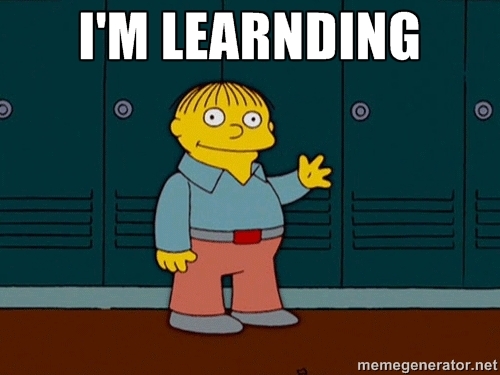1. Learn the broad strokes.
When you begin learning a new technique it’s easy to get lost in a virtual sea of detail and nuance. At this stage of the learning process don’t worry about these smaller details but instead focus on breaking the technique down into three to five key steps.
These key steps are your points of emphasis.
When you are practicing the technique be sure to pause at each of these points and really “lock” the step into place. Tighten up the step as much as possible making sure that each of your limbs, including your head, is where it is meant to be.
Which brings us to the next step…
2. Learn precisely where your legs, arms and head should be for each of these steps.
Whether we are cleaning our teeth, flicking a lightswitch or chopping onions the point of contact to our task is typically our hands. As such, whenever we interact with the world we tend to think about it in terms of what we are doing with our hands.
Complex tasks though – like nearly every technique found in Jiu Jitsu – are full body affairs.
It is especially important to train yourself to be specifically aware of the positioning of each of your legs and head. The positioning of your legs greatly influences your ability to use your hips and the position of your head reveals the alignment of your spine. Correct positioning of the hips and alignment of the spine maximises your ability to apply force while minimising effort.
3. Drill the technique against resistance.
Once you can move through the technique reasonably accurately and smoothly introduce some resistance to your repetitions. This doesn’t mean that you should jump straight to trying to execute the technique in full on rolling – you need to find a way of adding progressive resistance while performing specific repetitions.
There are many ways of doing this but there are two which are particularly effective and easy to do. The first is simply to have your partner start applying a very light amount of resistance and every time you successfully perform the technique apply more resistance on the next repetition. If they escape or defend the technique for a significant amount of time then they apply less resistance on the next repetition. The second is for your partner to start applying resistance at a particular stage of the technique; Start at the last step and, as you successfully finish the technique, work back towards the first step.
4. Add details.
Working the technique against some resistance should have provided you with some questions; Is there a particular stage or way in which you fail to finish the technique? Are you struggling to finish the technique against people of a particular size or rank?
Provided that you are still correctly executing each major step of the technique getting these questions answered – usually by asking someone more knowledgeable than yourself or through trial and error – will let you know which of the many smaller details to focus on.
5. Start trying the technique against progressively better and larger opponents in free rolling.
Start with small white belts and work towards successfully executing the technique on large black belts. Whenever you encounter a recurring problem go back to steps three and four.
******
If you can get to the point where you can successfully and regularly pull off the technique against brown and black belts while rolling you are very, very good at it.
But we’re talking about mastery.
Mastering a technique is something beyond very, very good. Mastery implies a level of understanding that exceeds technical detail and nuance.
6. Alter your perspective.
Looking at a technique the same way as everybody else is a sure fire way to limit potential – both yours and that of the technique itself.
Be aware of the typical patterns your mind falls into and try to break out through conscious effort.
Working on a sweep? Try thinking about how you would approach it as a throw or takedown.
A submission? Practice it like you would a position.
7. Contribute.
If you are genuinely on the road to mastery then by this stage odds are good that there is something you do in the execution of this technique that is different from how it is typically performed. Whether it is a new entry, a change of angle or a grip placed in a new location there is something that improves either the effectiveness of the efficiency of the technique and it’s now a case of recognising and defining what you do that is different and why.
8. Simplify.
The mark of a master is simplicity. The ability to take everything learnt over the previous seven steps and boil it down to three to five key points denotes genuine knowledge and understanding. This is the same as step one but with the key difference of the experience of the months and years you have spent studying, practicing and training.
These key points might be different from the ones you started with in step one or they might be the same but with a different emphasis.
******




